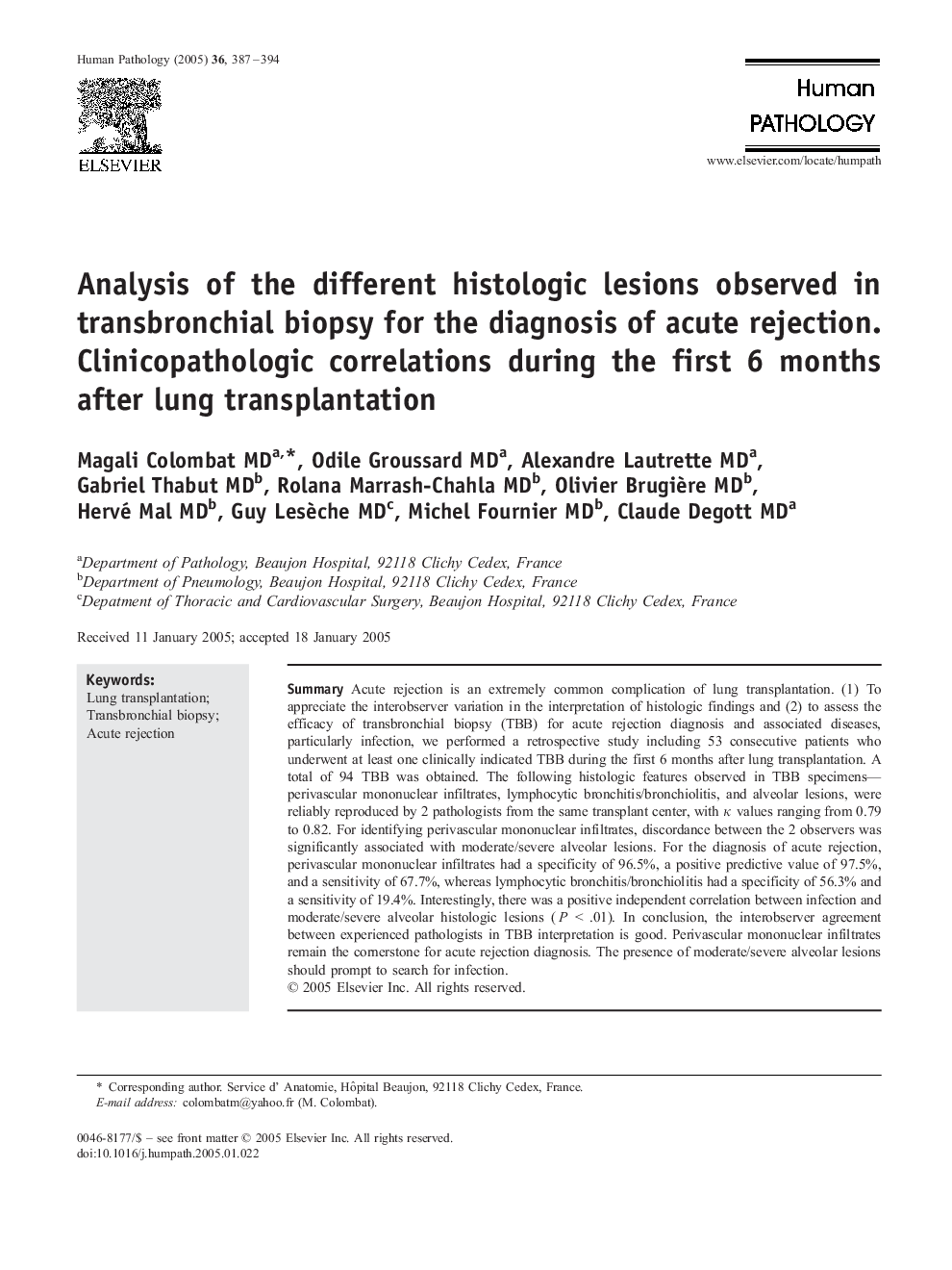| Article ID | Journal | Published Year | Pages | File Type |
|---|---|---|---|---|
| 9365764 | Human Pathology | 2005 | 8 Pages |
Abstract
Acute rejection is an extremely common complication of lung transplantation. (1) To appreciate the interobserver variation in the interpretation of histologic findings and (2) to assess the efficacy of transbronchial biopsy (TBB) for acute rejection diagnosis and associated diseases, particularly infection, we performed a retrospective study including 53 consecutive patients who underwent at least one clinically indicated TBB during the first 6 months after lung transplantation. A total of 94 TBB was obtained. The following histologic features observed in TBB specimens-perivascular mononuclear infiltrates, lymphocytic bronchitis/bronchiolitis, and alveolar lesions, were reliably reproduced by 2 pathologists from the same transplant center, with κ values ranging from 0.79 to 0.82. For identifying perivascular mononuclear infiltrates, discordance between the 2 observers was significantly associated with moderate/severe alveolar lesions. For the diagnosis of acute rejection, perivascular mononuclear infiltrates had a specificity of 96.5%, a positive predictive value of 97.5%, and a sensitivity of 67.7%, whereas lymphocytic bronchitis/bronchiolitis had a specificity of 56.3% and a sensitivity of 19.4%. Interestingly, there was a positive independent correlation between infection and moderate/severe alveolar histologic lesions (P < .01). In conclusion, the interobserver agreement between experienced pathologists in TBB interpretation is good. Perivascular mononuclear infiltrates remain the cornerstone for acute rejection diagnosis. The presence of moderate/severe alveolar lesions should prompt to search for infection.
Related Topics
Health Sciences
Medicine and Dentistry
Pathology and Medical Technology
Authors
Magali MD, Odile MD, Alexandre MD, Gabriel MD, Rolana MD, Olivier MD, Hervé MD, Guy MD, Michel MD, Claude MD,
